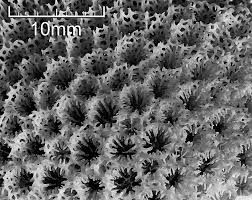| Citation |
|
Description |
Geographic Range [top]
Range Description: This species is found in the central Indo-Pacific, South-east Asia, eastern Australia, and oceanic West Pacific.
Countries occurrence:
Native:
Australia; Cambodia; Fiji; Indonesia; Kiribati; Malaysia; Marshall Islands; Micronesia, Federated States of ; Nauru; New Caledonia; Palau; Papua New Guinea; Philippines; Singapore; Solomon Islands; Taiwan, Province of China; Thailand; Tuvalu; Vanuatu; Viet Nam
FAO Marine Fishing Areas:
Native:
Indian Ocean – eastern; Pacific – northwest; Pacific – southwest; Pacific – western central
Additional data:
? Lower depth limit (metres): 30
? Upper depth limit (metres): 1
Range Map: Click here to open the map viewer and explore range.
Population [top]
Population: This species is rare.
There is no species specific population information available for this species. However, there is evidence that overall coral reef habitat has declined, and this is used as a proxy for population decline for this species. This species is particularly susceptible to bleaching, disease, and other threats and therefore population decline is based on both the percentage of destroyed reefs and critical reefs that are likely to be destroyed within 20 years (Wilkinson 2004). We assume that most, if not all, mature individuals will be removed from a destroyed reef and that on average, the number of individuals on reefs are equal across its range and proportional to the percentage destroyed reefs. Reef losses throughout the species range have been estimated over three generations, two in the past and one projected into the future.
The age of first maturity of most reef building corals is typically three to eight years (Wallace 1999) and therefore we assume that average age of mature individuals is greater than eight years. Furthermore, based on average sizes and growth rates, we assume that average generation length is 10 years, unless otherwise stated. Total longevity is not known, but likely to be more than ten years. Therefore any population decline rates for the Red List assessment are measured over at least 30 years. See the supplementary material for further details on population decline and generation length estimates.
[Get Adobe Reader]
For further information about this species, see Corals_SupportingDoc.pdf.
A PDF viewer such as Adobe Reader is required.
Current Population Trend: Unknown
Additional data:
? Population severely fragmented: No
Habitat and Ecology [top]
Habitat and Ecology: This species is only found in environments with moderate wave action, generally to depths of 30 m.
Systems: Marine
Generation Length (years): 10
Threats [top]
Major Threat(s): Species of this genus are attractive to the aquarium trade due to their physical appearance. Threats to this species therefore include coral removal and harvesting for display in aquariums and for the curio-trade. In addition, the Alveopora genus was ranked as having the highest bleaching response and is in the top ten genera for extinction risk in the Western Indian Ocean (McClanahan et al. 2007). However, Alveopora species are considered to be relatively insusceptible to disease.
In general, the major threat to corals is global climate change, in particular, temperature extremes leading to bleaching and increased susceptibility to disease, increased severity of ENSO events and storms, and ocean acidification. In addition to global climate change, corals are also threatened by a number of localized threats. Localized threats to corals include fisheries, human development (industry, settlement, tourism, and transportation), changes in native species dynamics (competitors, predators, pathogens and parasites), invasive species (competitors, predators, pathogens and parasites), dynamite fishing, chemical fishing, pollution from agriculture and industry, domestic pollution, sedimentation, and human recreation and tourism activities. The severity of these combined threats to the global population of each individual species is not known.
Conservation Actions [top]
Conservation Actions: All corals are listed on CITES Appendix II. Parts of this species distribution fall within several Marine Protected Areas within its range.
Recommended measures for conserving this species include research in taxonomy, population, abundance and trends, ecology and habitat status, threats and resilience to threats, restoration action; identification, establishment and management of new protected areas; expansion of protected areas; recovery management; and disease, pathogen and parasite management. Artificial propagation and techniques such as cryo-preservation of gametes may become important for conserving coral biodiversity.
Having timely access to national-level trade data for CITES analysis reports would be valuable for monitoring trends this species. The species is targeted by collectors for the aquarium trade and fisheries management is required for the species, e.g., Marine Protected Areas, quotas, size limits, etc. Consideration of the suitability of species for aquaria should also be included as part of fisheries management, and population surveys should be carried out to monitor the effects of harvesting.
Citation: Sheppard, A., Fenner, D., Edwards, A., Abrar, M. & Ochavillo, D. 2008. Alveopora marionensis. The IUCN Red List of Threatened Species 2008: e.T132896A3482552. http://dx.doi.org/10.2305/IUCN.UK.2008.RLTS.T132896A3482552.en. Downloaded on 28 May 2018.
Disclaimer: To make use of this information, please check the .
Feedback: If you see any errors or have any questions or suggestions on what is shown on this page, please provide us with feedback so that we can correct or extend the information provided
|



